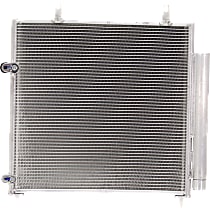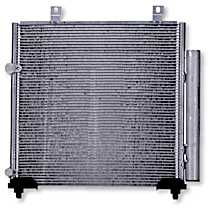{
"lazyNodes": false,
"abFitnotesFlag": false,
"abCrawlReviews": false,
"productOptionsCookie": false,
"orderDelayFlag": false,
"skipSessionCookie": false,
"covidMessage": false,
"fullTitleCookie": false,
"nrLoggerCookie": false,
"checkoutReviewCookie": false,
"productOptionSeqCookie": false,
"maintenanceFlag": false,
"bufferETACookie": false,
"multiShippingDiscountFlag": false,
"newFitmentFlag": false,
"surveyOptInFlag": false,
"crossSellFlag": false,
"skuMappingFlag": false,
"paySplitCookie": false,
"callDisableFlag": false,
"zipPaymentFlag": "u",
"hassleFreeReturn": false,
"lifetimeReplacement": false,
"cpn_off": false
}Mitsubishi Mirage A/C Condensers
Shop Catalog
![]() WARNING: This product can expose you to chemicals including Chromium, Lead and lead compounds, which is known to the State of California to cause cancer and birth defects or other reproductive harm. For more information go to www.P65Warnings.ca.gov.
WARNING: This product can expose you to chemicals including Chromium, Lead and lead compounds, which is known to the State of California to cause cancer and birth defects or other reproductive harm. For more information go to www.P65Warnings.ca.gov.
![]() WARNING: This product can expose you to chemical which is known to the State of California to cause cancer and birth defects or other reproductive harm. For more information go to www.P65Warnings.ca.gov.
WARNING: This product can expose you to chemical which is known to the State of California to cause cancer and birth defects or other reproductive harm. For more information go to www.P65Warnings.ca.gov.
![]() WARNING: This product can expose you to chemical which is known to the State of California to cause cancer and birth defects or other reproductive harm. For more information go to www.P65Warnings.ca.gov.
WARNING: This product can expose you to chemical which is known to the State of California to cause cancer and birth defects or other reproductive harm. For more information go to www.P65Warnings.ca.gov.
Top Rated Products
Popular Products
Customer Guides
Mitsubishi Mirage How-to: Troubleshooting the AC Condenser
The most usual culprit behind air conditioning condenser problems are Freon leaks that may be caused by a loose seal or punctured hoses. Other factors include electrical malfunction or internal mechanical failures. Replacing the condenser may not necessarily solve the problem, since the issue may be caused by a multitude of different things adjacent to the air conditioning system. This article will discuss the problems and the extent of the damage they bring, to help you successfully repair the air conditioning condenser in your Mitsubishi Mirage.
Leaks
Seals and hoses do have a tendency to fail after due time; they are, after all, subjected to fickle temperature cycles. Imagine being subjected to heat for hours, then being allowed to cool down after quite some time-only to be subjected to heat once again. Varying temperatures cause the seals and hoses to expand and contract back-and-forth, allowing their rubber material to harden, shrink, or be punctured after prolonged use. Before deciding to replace the condenser, check the seals and the hoses first; you might mistakenly replace the unit itself when you could have solved the problem by replacing a seal or a hose.
Electrical and mechanical problems
The wires and coils transmitting electricity to the unit may melt or break due to old age or overheating. For starters, this happens when the vehicle is especially old and the air conditioning system is having a hard time keeping up with the higher demands of the aging engine. Although, if the vehicle has put on some few years but is not necessarily old, electrical and mechanical failures may be the effects of a recent highway overheat. It may be that the parts experienced tremendous pressure that lead to premature wear; it may also clog up the entire system over time when steam and debris solidified around the orifices of the condenser. Once this kind of damage hit the condenser and other adjacent components, there is no other way to solve the problem but to have the unit replaced-wires, coils, tubes, and all.
With a faulty air conditioning condenser, there would be no way to bring in the coolness of the Freon and expel the heat out of the car. In under five minutes, you will surely be sweltering underneath your clothes, rolling your car windows down for some fresh air. Prevent this from happening by following the maintenance steps below. We will guide you through the ins and outs of air conditioning system repair to temporarily help you out before you can get a hold of professional assistance. Read on.
Familiarize yourself with the AC system in your car.
While the air conditioning system on your car is basically a refrigerator-reformatted and made to fit in your vehicle-the components and part models are varying. You can never start a repair without having the proper tools and parts for the project; so, before going ahead with anything, it is always wise to consult your user manual first for the proper replacement parts you suspect you will need. Also, the most important thing you should be aware of from the get-go, is that different cars have different refrigerants. Late-model cars usually carry the R-134a substance, while older cars have the R-12 Freon. R-12 Freon is more expensive and more difficult to come by. In some states; it is also required to have some sort of license before handling this substance.
Check for leaks through visual inspection.
Ascertain whether or not you indeed need to replace the unit-or just some tubes-by feeling and looking at the wires, hoses, and orifices of the condenser. Leaks are easy to spot because they are characterized by a white, cotton-like discharge. If you suspect that there are leaks but you can't seem to see or feel your way through it, auto supply stores sell fluorescent dyes that are added to the condenser system to highlight the leaks.
Top up the refrigerant.
It might be that you are just overestimating the extent of the damage, when the only problem is a short supply of refrigerant. If you have exhausted all means to determine leaks, and you are fairly sure that the condenser cannot be damaged since your car is relatively new, then try replenishing the Freon substance and feel for any positive changes. If this fails, it's time to bring in the mechanics.





